An Everyday DNA blog article
Written by: Sarah Sharman, PhD, Science writer
Illustrated by: Cathleen Shaw
Imagine a warrior dressed and ready for battle. You might be picturing him in steel armor. But what if I told you his armor was made from cotton? You probably wouldn’t believe it.
As it turns out, ancient Mayans wore armor made from quilted cotton that was soaked in saltwater to toughen it up. We consider cotton to be a soft, stretchy material but it can be used for a wide range of diverse products. Today, it is used predominantly for clothing. It is also a major component of U.S. paper currency and other goods, like coffee filters and bandages.
Cotton is easily one of the most important products in our everyday lives, but it is easy to forget that it comes from a plant. Let’s track the life of cotton as it transforms from a seed to the fabric of your favorite sports team or rock band t-shirt.
The journey from seed to shirt
The typical t-shirt begins its life on a farm in America, China, or India. Those three countries produce over half of the cotton consumed worldwide. Cotton thrives in tropical and subtropical regions of the world. In the United States, cotton is predominantly grown in the southern half of the country, ranging from California to Texas to West Virginia.
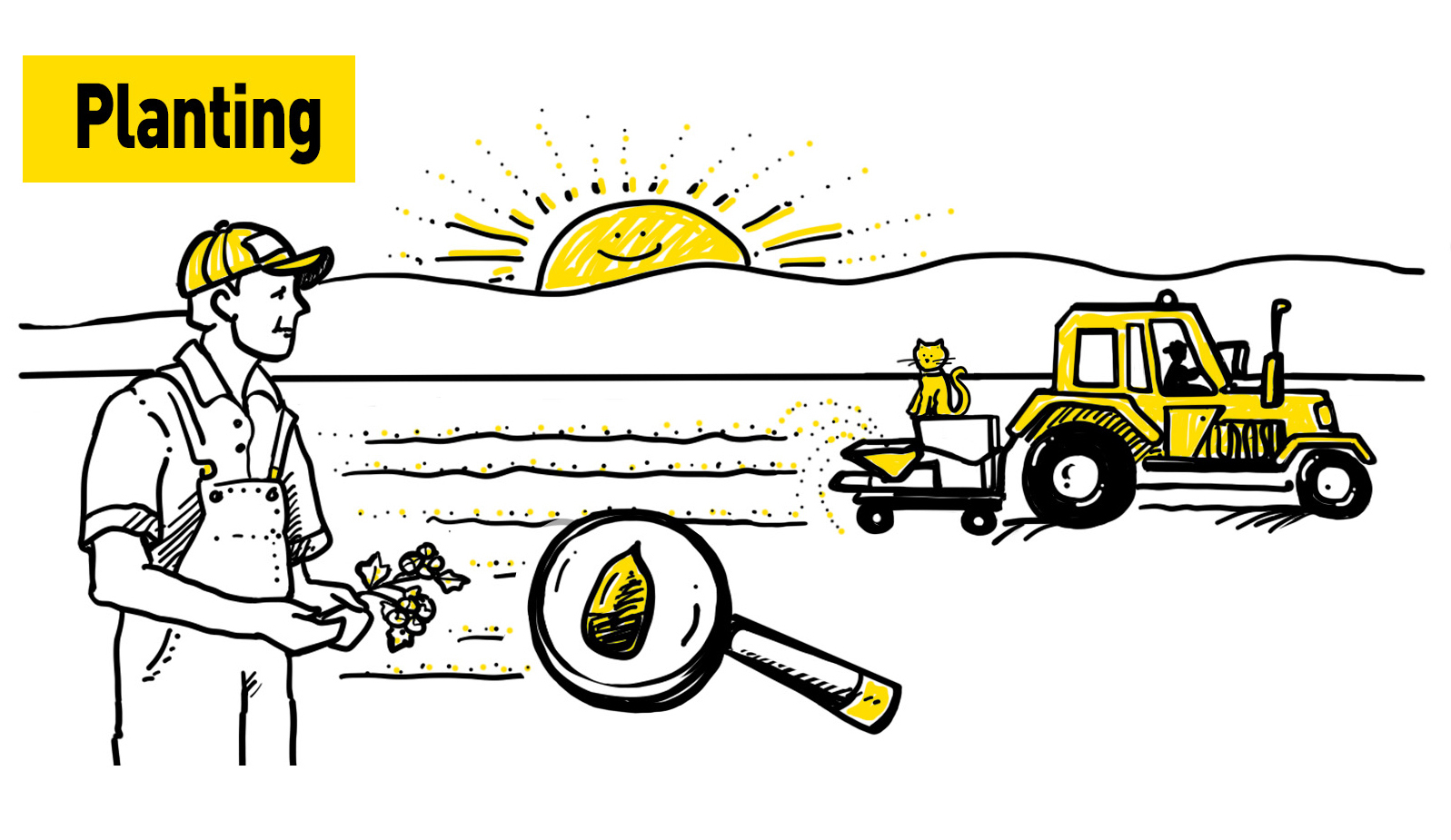 Cotton seeds are sown in fields from March to June. That is when the soil is warm enough for the seeds to germinate. There are two main types of domesticated cotton that are grown across the globe. The most popular is called Gossypium hirsutum, or upland cotton. It represents 90 percent of worldwide cotton production and 95 percent of U.S. cotton production. Upland cotton produces good quality fiber for making fabric for things like t-shirts and blue jeans.
Cotton seeds are sown in fields from March to June. That is when the soil is warm enough for the seeds to germinate. There are two main types of domesticated cotton that are grown across the globe. The most popular is called Gossypium hirsutum, or upland cotton. It represents 90 percent of worldwide cotton production and 95 percent of U.S. cotton production. Upland cotton produces good quality fiber for making fabric for things like t-shirts and blue jeans.
The second most popular type, Gossypium barbadense, also known as Pima or Egyptian cotton, hails from South America. It makes up eight percent of global cotton output and produces a very soft and strong fiber that is used for higher quality fabrics like pricier clothes and bedsheets.
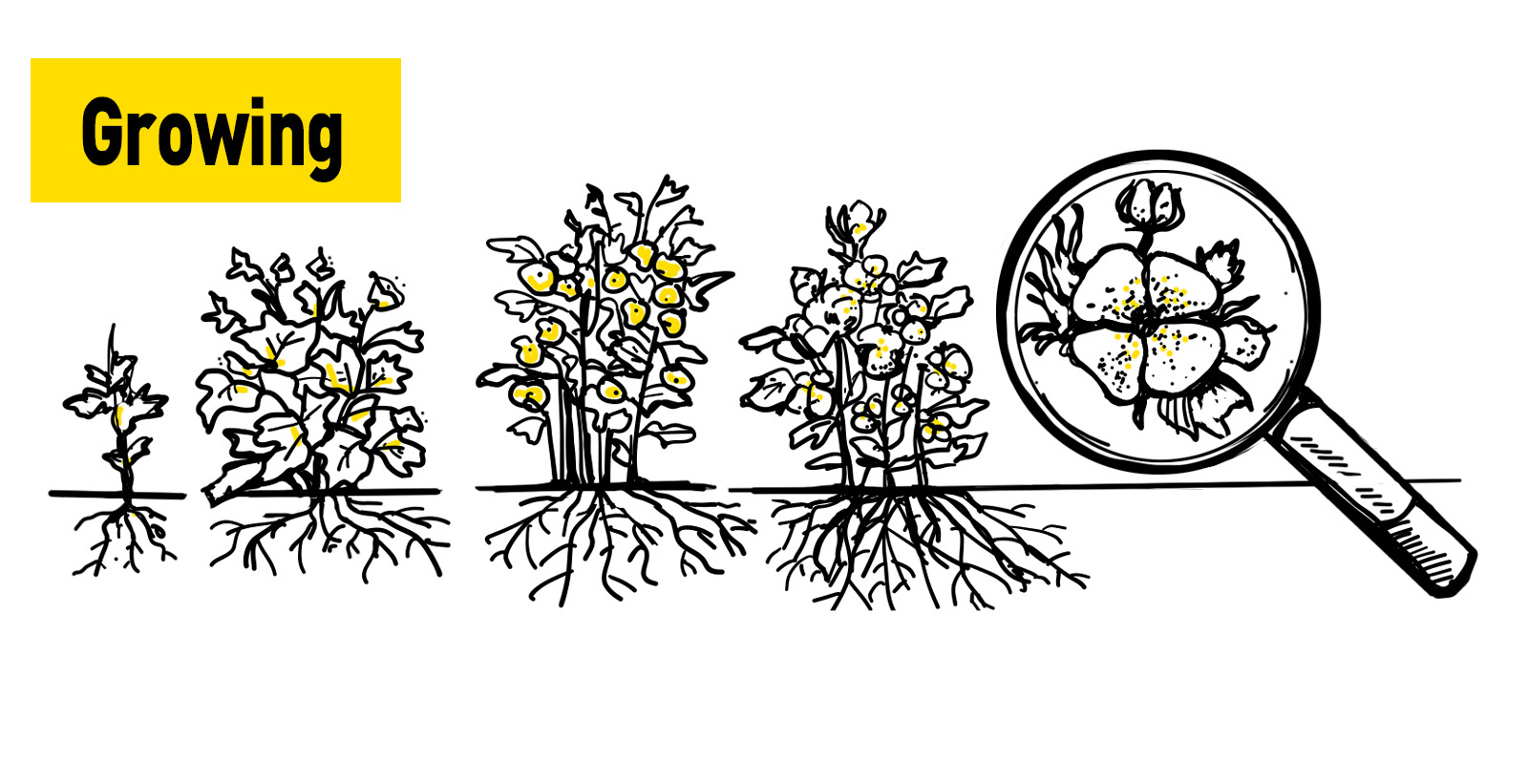 After germination, a cotton seedling emerges from the ground and grows into a green, bushy shrub. Many people don’t know that cotton actually produces flowers and fruit. Cotton flowers are only briefly on the plant. Over a few days, the flowers change color from pale yellow to pink before eventually turning red and dying. The fruit, or boll, of the cotton plant remains in the flower’s place.
After germination, a cotton seedling emerges from the ground and grows into a green, bushy shrub. Many people don’t know that cotton actually produces flowers and fruit. Cotton flowers are only briefly on the plant. Over a few days, the flowers change color from pale yellow to pink before eventually turning red and dying. The fruit, or boll, of the cotton plant remains in the flower’s place.
The cotton boll serves as a protective covering for cotton seeds and the fibers that emerge from them. Individual seeds are home to as many as 16,000 fibers, each one made on a single cell. Once the fiber is fully grown, the boll cracks open, allowing air to dry out the fluffy cotton puff.
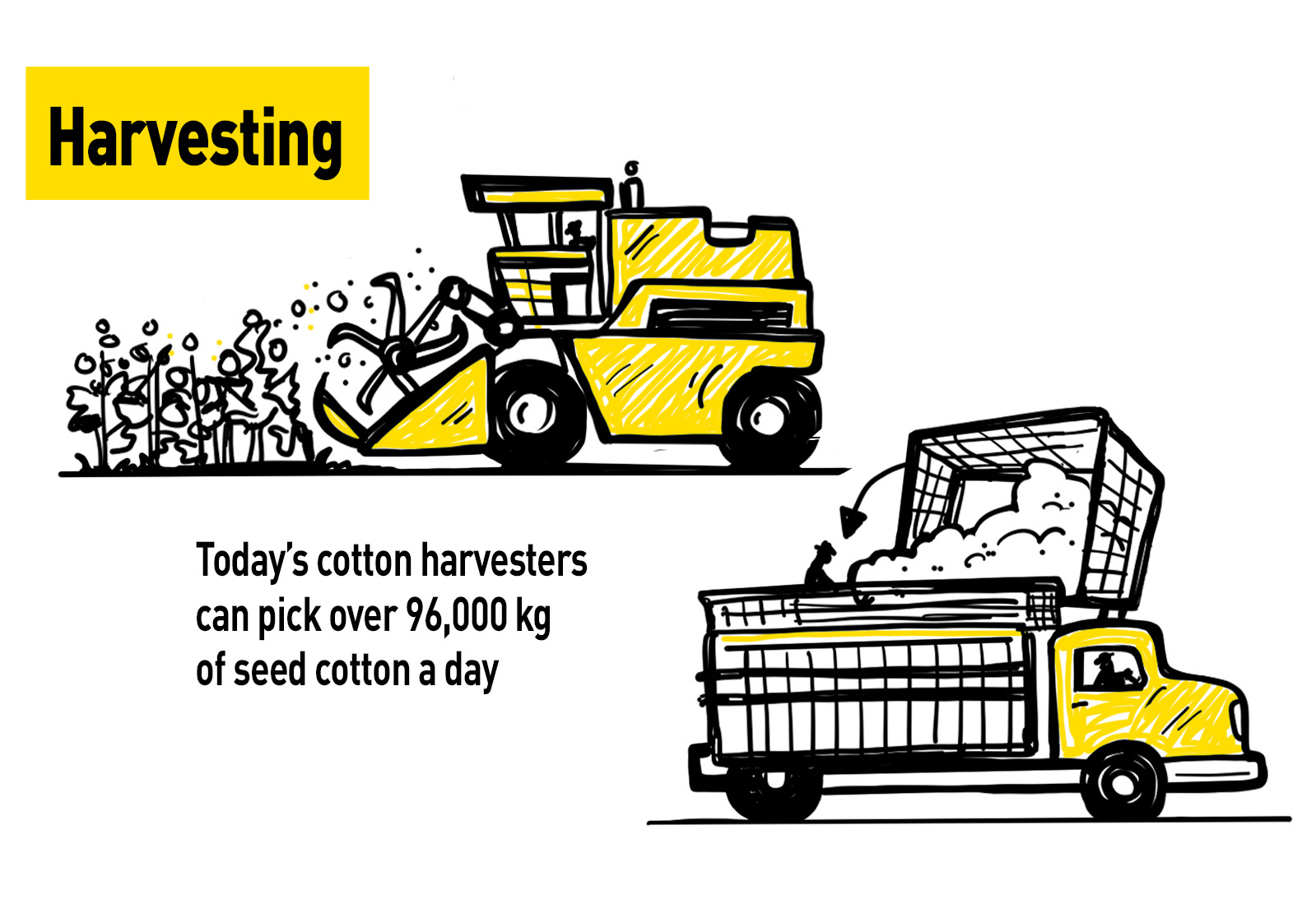 Cotton is harvested in the U.S. from August to November. In some developing countries, cotton is still picked by hand. The average person can pick 200 pounds of cotton per day. The use of modern farming equipment allows developed countries to harvest the same amount of cotton in 90 seconds. Two machines are used in cotton harvesting: the cotton picker and the cotton stripper. Cotton pickers pick cotton from the boll, leaving the plant undamaged while cotton strippers ‘strip’ the entire boll and stalk from the plant.
Cotton is harvested in the U.S. from August to November. In some developing countries, cotton is still picked by hand. The average person can pick 200 pounds of cotton per day. The use of modern farming equipment allows developed countries to harvest the same amount of cotton in 90 seconds. Two machines are used in cotton harvesting: the cotton picker and the cotton stripper. Cotton pickers pick cotton from the boll, leaving the plant undamaged while cotton strippers ‘strip’ the entire boll and stalk from the plant.
After the cotton fiber is harvested, it is compressed into giant blocks called modules. These are long, tall rectangles of compressed cotton that fit in the back of a tractor-trailer. A single module of cotton typically weighs 20,000 pounds.
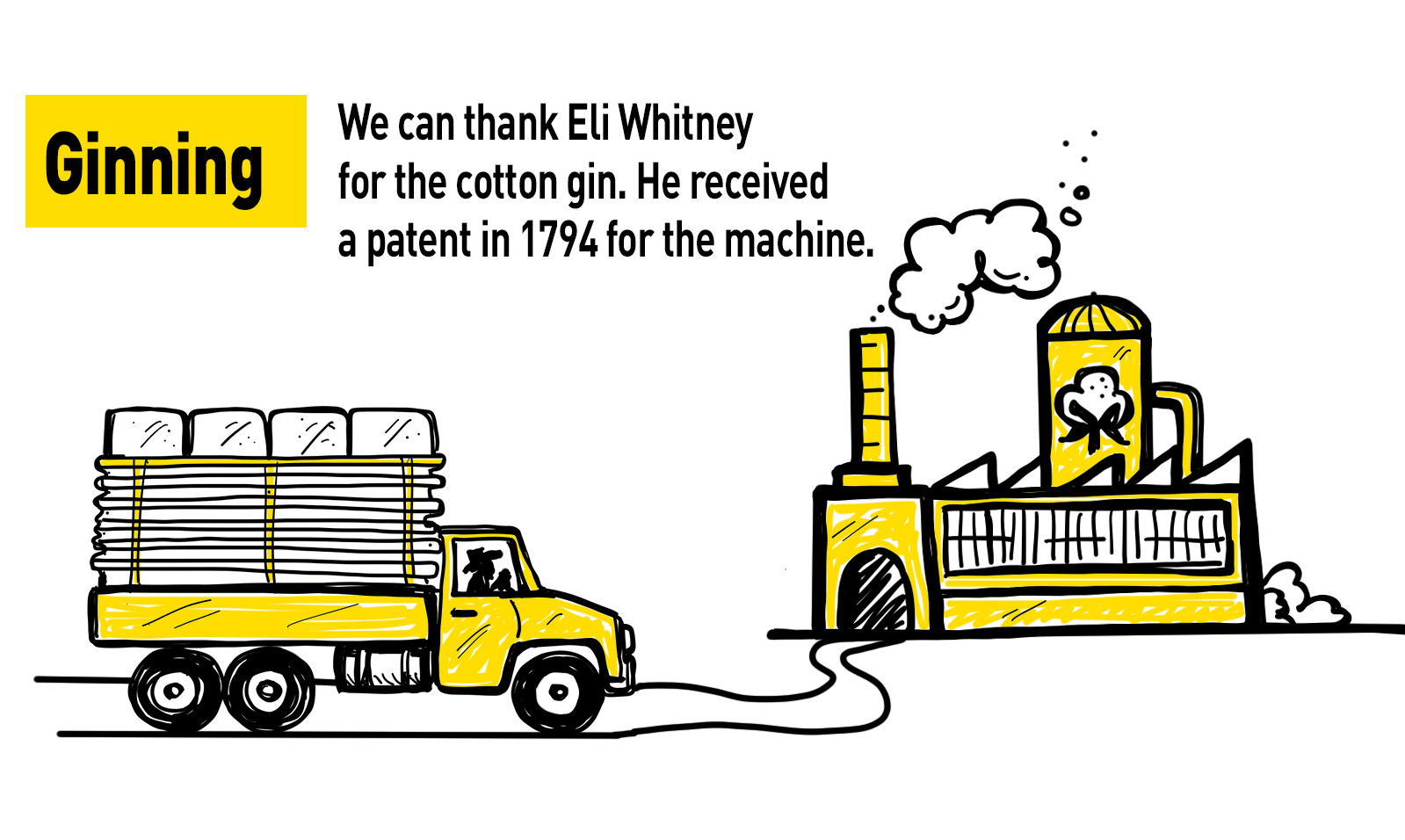 From the field, cotton modules travel to factories to be cleaned and prepared to be made into your favorite tee. The cotton gin is a machine that separates cotton fibers from the seed and removes foreign material from the fiber. It is one of the most impactful inventions in human history because it eliminated the labor-intensive process of removing seeds present in the cotton lint.
From the field, cotton modules travel to factories to be cleaned and prepared to be made into your favorite tee. The cotton gin is a machine that separates cotton fibers from the seed and removes foreign material from the fiber. It is one of the most impactful inventions in human history because it eliminated the labor-intensive process of removing seeds present in the cotton lint.
When debris and seeds are removed from the cotton fiber, it is dried and compressed into bales known as lint. For every 100 pounds of fiber produced by a cotton plant, it also produces about 162 pounds of cottonseed. In this way, cotton is actually two crops. The cottonseed can be pressed into oils or used for animal feed. 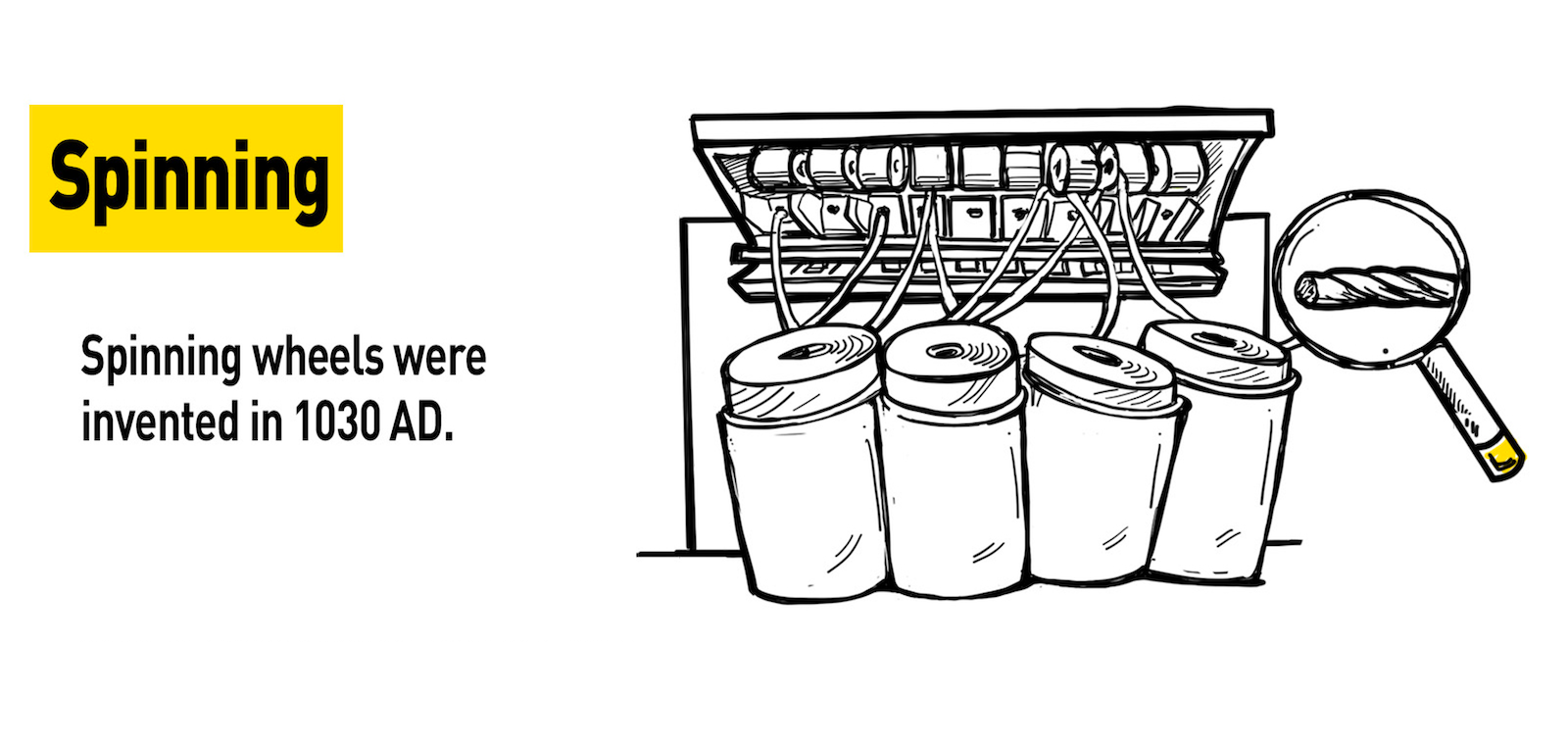
The bales of cotton fiber go through a series of steps to prepare them for later processing. Carding is a process that separates and disentangles fibers, removes short fibers and other impurities, and blends the fibers, before compressing them into a rough rope of fiber. The rough rope is then spun by a spinning machine into thinner, more refined thread or yarn.
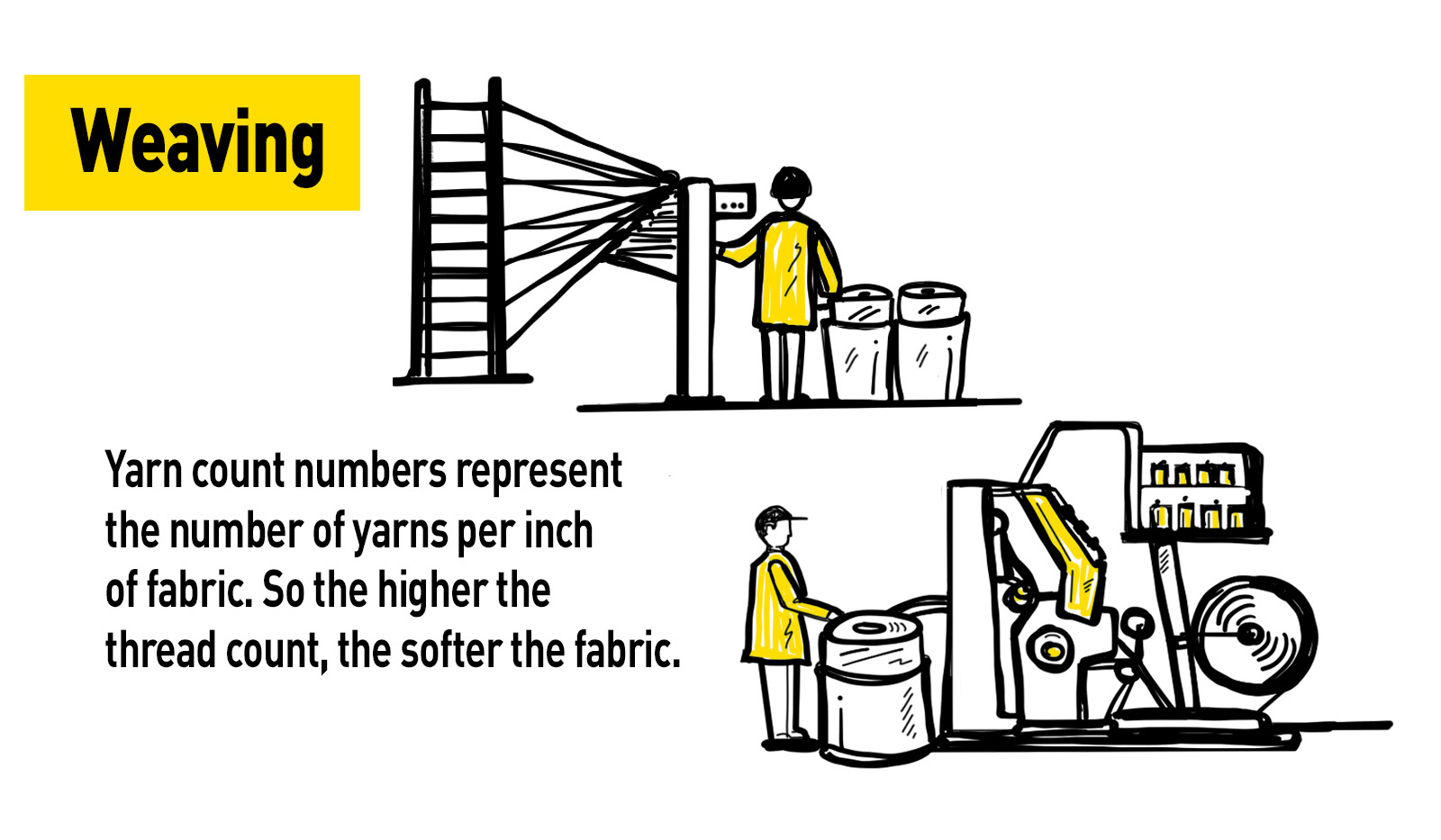
Next, the cotton thread is made into larger pieces of fabric. Weaving is the process in which two sets of yarn are woven together to make a fabric. The yarn is woven by interfacing strands on a loom or knitted by interlocked loped strands using needles to make cloth for the t-shirt.
Different fabrics are woven using different methods. That creates wide ranges of fabric thicknesses, textures, and patterns that exist in textiles and clothing.
 Freshly woven cotton fabric has a dull gray or cream appearance. Fabric for white items is bleached or whitened before being made into the final product. If you want colored fabric, it is passed through a hot dye solution and squeezed through rollers. The fabric is cut into patterns and stamped out to be sewn together into a t-shirt. One bale of cotton—approximately 480 pounds of cleaned cotton lint—can make more than 1,200 t-shirts.
Freshly woven cotton fabric has a dull gray or cream appearance. Fabric for white items is bleached or whitened before being made into the final product. If you want colored fabric, it is passed through a hot dye solution and squeezed through rollers. The fabric is cut into patterns and stamped out to be sewn together into a t-shirt. One bale of cotton—approximately 480 pounds of cleaned cotton lint—can make more than 1,200 t-shirts.
How are scientists helping farmers keep up with demand?
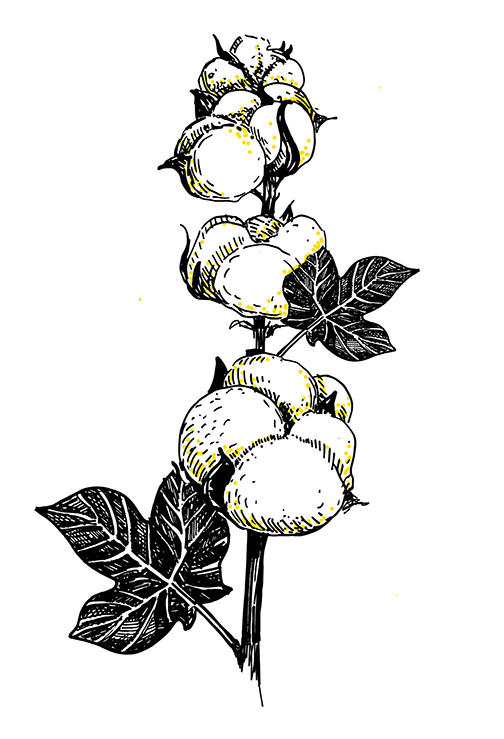
Cotton production contributes significantly to the U.S. economy. During the 2019-2020 fiscal year, the U.S. produced nearly 20 million bales of cotton, representing about $7 billion in total value. The livelihood of many farmers and their families relies on successful cotton harvests every year.
Ensuring a bountiful harvest usually means staying one step ahead of Mother Nature and the many threats cotton faces throughout the growing season. Bugs love cotton. In fact, the boll weevil threatened to wipe out the cotton in the southern U.S. in the mid-1900s. Weather events like drought, heavy periods of rain, or late freezes are also major threats to each year’s cotton harvest. In order to combat these potential threats, farmers rely on fungicides, pesticides, fertilizers, and irrigation systems. However, these treatments and regimens are costly and time-consuming.
Farmers are not alone in their fight to produce enough soft, strong, and sustainable cotton to clothe the world. Scientists are by their side investigating how to optimize cotton’s growth based on nutrients, weather, and genetics. The ultimate goal is to produce cotton plants that require fewer pesticides, fertilizers, and water inputs.
Researchers at the HudsonAlpha Genome Sequencing Center have been working on improving tetraploid cotton for a decade with funding from the National Science Foundation (NSF). And a long-standing collaboration between Cotton Incorporated and HudsonAlpha formed the foundation for major advances in the genomics of cotton, starting with sequencing the very first genome of cotton species and an additional 11 genomes in the past two years.
Although the team sequenced the initial genome, that didn’t mean they could immediately start identifying genes that influence important traits. As it turns out, cotton species do not have much genetic diversity between them, making it particularly challenging to track down the genetic reasons one crop might regenerate faster and another might show hardier drought resistance.
Through a new grant funded by the United States Department of Agriculture National Institutes of Food and Agriculture (USDA NIFA), HudsonAlpha Faculty Investigator Jeremy Schmutz and his team are creating a cotton pangenome, a collection of many cotton genomes. This tool will allow researchers to more accurately find genetic targets to introduce beneficial traits into different cotton species.


